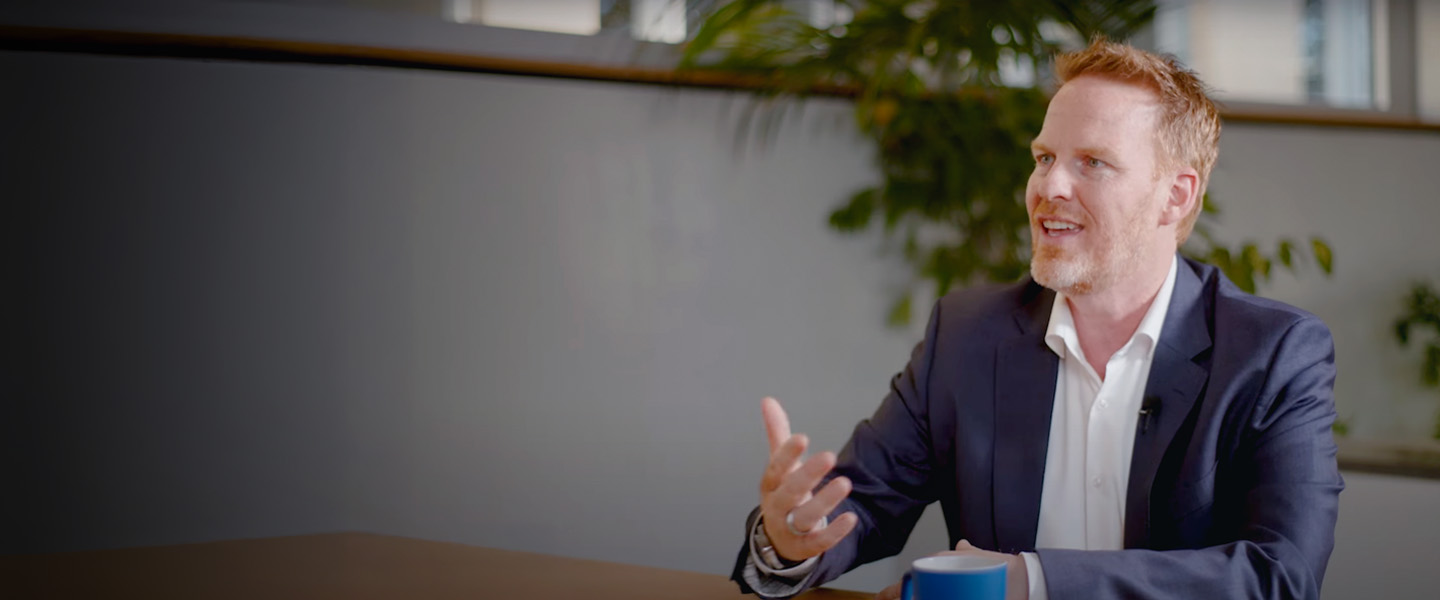
What does the future hold for a 160-year-old cash handling company when major trends across the world portend a shift away from cash? The company in question is Nasdaq Stockholm-listed Loomis.
Loomis has increasingly found itself at the intersection of two forces. On the one hand, an increase in the acceptance of debit/credit card by merchants, a rise in e-Payment services, the convenience of mobile wallets and many more fintech innovations are challenging the cash ecosystem. On the other hand, cash in circulation has been increasing since 2007 (except in Russia and Sweden) and it remains the most common payment method in the world in 2018. Within this context, Loomis employs around 25,000 people carrying out cash in transit (CIT) and cash management services (CMS) through an international network of more than 400 branches in over 20 countries with annual revenues of SEK 19.2 billion ($2 billion) in 2018. Loomis customers are primarily banks and retailers – two industries that are being heavily disrupted by evolving customer behaviors and a new breed of competitors.
“The strategies, capabilities, processes and mindsets that have led us to where we are today will not take us into the future,” stated Patrik Andersson when he took over as the new CEO of Loomis in 2016. He launched a strategy review process and established dedicated teams comprising people from cross-functional areas to explore the future trajectory of Loomis’s businesses – what is working and what is not, what are the untapped opportunities and which threats could derail its strategy.
The Challenge – Slow Down!
As the projects went underway, Patrik had one concern. How could he ensure that the discussions and options being explored would not become incremental and internally focused? How could the teams be challenged to see diverse possibilities before converging on the best way forward?
This is a common issue faced by most project teams. Typically, they are run by busy executives who commit limited time to the project work (in parallel to their regular responsibilities). Executives are in a hurry to make decisions and get going. Given the stiff timelines and tough project goals, the tendency is to quickly reach solutions that lie within the comfort zone. The assumption here is that “we know our industry and our competitors; we know what our customers want, we just need to improve our operational efficiency and align our systems and processes to create value.” Rushing to quick answers essentially means doing the same things, just working harder. This is a “delivery” mindset that is typically employed for managing today.
However, to manage for tomorrow with a “leader” mindset, executives need to expand the areas of choice and shape the strategic options for the company going forward. For this, they must adopt a learning attitude and explicitly challenge themselves to step out of their comfort zone. The question is “how”?
Our answer – by applying divergent thinking.
We define divergent thinking as a process for identifying new opportunities, finding multiple creative ways to address intractable issues or abstract problems and challenging the organizational status quo. The benefit of divergent thinking is that it encourages people to think from multiple perspectives to open theoretically limitless options, followed by sense-making, ultimately resulting in more innovative solutions or breakthrough possibilities to address the challenge at hand. Given that there is no right or wrong answer, the process also enables a deeper understanding and significant learning for the individual, team and the organization.
Having worked with scores of executives, we find that divergent thinking does not occur on its own. First, it must be framed in a way that enables the opening of new vistas but not going off on a tangent. Second, it must be built into the project design in terms of time allocation, discussion formats and specific interventions.
Four lenses to power up divergent thinking
As a framework to encourage teams to expand their thought process, we apply four lenses: 1) Two-directional approach, 2) Purpose, 3) Outside in and 4) Disruption (see Figure 1).

Each lens makes a distinct contribution to the overall strategy discussion. A combination of the four results in:
- Surfacing options to accelerate growth along the company’s existing trajectory
- Developing breakthrough ideas to change the current trajectory of the company
In the case of Patrik’s challenge at Loomis, the four lenses framework resulted in a robust divergent process that delivered better outcomes by allowing the project teams to take time to slow down first.
1.Two-directional approach
A two-directional approach, comprising core-forward and future-back thinking, serves to break the incremental mindset that prevails in many companies today. “Core-forward” is the typical approach employed by companies as they focus on securing operational efficiency, achieving short-term KPIs, and protecting market share. Core-forward thinking alone is limiting since it focuses purely on the traditional business with an incremental agenda. To build a comprehensive picture, core-forward must be coupled with the “future-back” approach. Lewis Carrol’s quote “If you don’t know where you are going, any road will get you there” is a good illustration of the importance of future-back thinking. This requires the leadership team to have a point of view on where the company is headed in the longer term.
Some questions that we ask companies are, “What are your KPIs beyond your budgets? What is your ambition for the business beyond financials? How will your business be fundamentally different in five years’ time?” The answers to these questions often expose the company’s lack of a change agenda, which holds the whole organization back.
Loomis applied the two-directional approach to chart the next steps on its strategy roadmap. Core-forward thinking propelled it to expand its strengths in cash management to forex solutions. Investing in forex solutions helped the company to unlock a range of untapped customers such as airlines, hospitality and tourism providers, independent currency exchangers, and so on. Loomis also strove to achieve better operating margins by moving up the customers’ value chain through investment in new technologies. At the same time, future-back thinking enabled it to “seed” new platforms to handle digital payments and to enhance its technical capabilities for future payment options. This was a priority for innovation, both internally and for acquisitions.
2.Purpose
Purpose is not about having lofty “words on the wall” to which companies pay nominal homage when it suits them. Purpose is the reason a company exists. It signifies what it stands for, why employees want to work for it and why other stakeholders want to partner with it. We find that purpose, done right, raises the game of a company – shaping what it does and why it does it – ultimately leading to business growth and profitability. Fundamentally, purpose allows a company to expand its impact – on multiple stakeholders, across the ecosystem, today and in the future.
While executives tend to see many risks in pursuing higher order objectives, leaders/organizations who buy into purpose are willing to take that risk in their stride to seek a bigger impact. Purpose thus provides the motivation and a reason to change decisions, actions and behaviors.
We find that by focusing on purpose, even legacy companies like Loomis can create an exciting future. Traditionally, Loomis has been the guardian of cash. It has come a long way since the age of stage coaches to provide the safe transit of cash via armored vehicles and guards (CIT), which accounted for 62% of its revenue in 2018. In the last decade it started CMS, which grew steadily, accounting for 31%. Patrik stated, “As the specialist at creating efficient cash flow, we know better than anyone else where, when and how much cash is needed in society. Our role has been evolving tremendously as we aim to lead the transformation of the cash ecosystem.” The next frontier for Loomis requires it to participate in payment systems of the future. A curious and exploratory mindset is needed to understand how payments will evolve and the opportunities this might present, and how technology can enable greater transparency, efficiency and security. The big challenge for Loomis now is to apply the purpose lens to create greater value for clients, partners and society alike.
3. Outside-in
As the name implies, the outside-in lens asks, “What will the ecosystem of the future look like in which companies must play – and win?” The focus is on trends shaping markets, customer behaviors and the competitive landscape. While leaders do systematically look at trends, too often they end up relating them to their existing businesses and operating models. Their focus is not only internal but also backward-looking as they define the world in terms of how they have operated in the past. However, it is critical for executives to actively understand the big trends (and even the weak signals) and what they could mean for their company. They need to ask, “How do these external trends threaten or enhance what we do today? How could they shape what we will be doing tomorrow?”
For Loomis, an in-depth analysis of the implications of the external trends enabled it to tackle the fundamental challenge of leveraging the transition occurring in the overall cash ecosystem? Outside-in thinking highlighted the single most important trend impacting Loomis – the increasing willingness of banks and retailers to outsource cash management in order to increase their cost efficiency and security (depending on the maturity of the market). Cash in transit was usually outsourced first, followed by other aspects of cash management, and finally associated value-adding services to its portfolio. Retail players were looking for advanced/integrated POS solutions while banks sought to consolidate branches and ATM networks.
This was an opportunity for Loomis to launch planning and forecasting services. Patrik explained, “Instead of going to an ATM or retailer to pick up or hand in cash, we will take care of the entire planning process. When the retailer is stocking up in the morning, we can tell him how much money he needs, and in which currencies and denominations. The bank does not have to tell us when to go to an ATM. We can do that ourselves. I will be surprised and disappointed if we don’t make SEK1 billion from the new services by 2021.” Loomis built an aggressive acquisition agenda targeting candidates to add new related services and technologies. Software and hardware solutions for back/front office and other planning tools were at the top of the list.
4. Disruption
We find that it is a combination of complacency and arrogance that blindsides leaders and prevents them from recognizing disruption from different quarters. “We got to where we are because we know how to run the business. Someone is always talking about disruption, but I don’t see it in my area,” is a common refrain. This lens looks at disruptive players who challenge existing businesses by changing the rules of the game.
Disruptive threats are normally not on the radar of incumbent firms. As such, companies are not set up to disrupt themselves or to even think about cannibalizing themselves. The logic of innovation within big companies is built upon big budgets, big teams and long timeframes to come up with a proven bet. The fear of failure is so high that at one company we were told that they prefer “100% successful entrepreneurs.” This is in sharp contrast to disruptive innovation whereby the initial minimum viable proposition is targeted at a less-demanding customer base and brought to the market at maximum speed. Over time, the product/service is continuously improved upon so much that the mainstream customers make a shift to this new offering.
For Loomis, it would be well worth the leadership time to identify potential disruptive players. Disruption could come from the proliferation of new payment methods spearheaded by fintech companies or from potential “one-stop-shops” that could provide integrated back- and front-office digital payment and transaction management solutions. To counter such threats, Loomis made a bold move to bridge the divide between digital and physical cash by partnering with Sonect, a Swiss company that converts retail shops into “virtual ATMs.” Sonect provides a platform for consumers to access digital cash at retail locations and withdraw it as physical cash. This reduces the cost of cash distribution for banks and simplifies in-store cash management for merchants via a location-based on-demand service.
Building upon the recommendations of the project teams, Loomis’ leadership charted a new strategy map to 2021 (see Figure 2). Increased growth and profitability would be achieved not only by developing the company’s core business but also through new strides up the cash management value chain and over time through new payment services. In line with the new strategy, Loomis launched several initiatives and committed investment on priority areas. For example, it opened two Centers of Excellence in 2018 that would focus on further developing solutions for retail customers and expanding its offering in CIT and CMS. Patrik stated, “We have entered a new chapter in Loomis’s evolution.”

Designing divergent thinking into the process
People tend to spend a greater proportion of their time taking action rather than discovering, discerning and deciding. Embedding divergent thinking into the project process requires:
- Tapping into the knowledge of the organization: There are pockets of excellence and rich perspectives that lie within functional or business silos. These can be brought to the surface either through workshops designed around particular topics with cross-functional groups or via one-on-one conversations with a cross-section of people across markets, hierarchy, level of experience, etc. Seeking these different points of view enables divergence even though it is derived from within the organization. It also informs the project team about potential success factors/derailers for the company strategy going forward.
- Making external visits: This is about experiential learning rather than just reading about best practices and success stories. Project teams should choose to visit companies that span industries, markets and customer profiles. The visits should be structured around issues that matter rather than the novelty of the company being visited. They are not “tourism visits” but should serve to break the barriers of complacency and arrogance.
- Holding customer/stakeholder conversations: These conversations should not focus on selling but gaining insights into customers’ needs and challenges. Additional insights from other stakeholders across the ecosystem are also key to develop a holistic perspective of the issues at hand. Growth opportunities come from responding to unmet needs, not from fighting for market share.
- Engaging subject matter experts: The role of the topic expert is not just to share insights but to be a provocateur who challenges the teams’ thinking. He/she is not there to provide the answers but to raise the level of the questions being asked.
Key enablers:
- A strong sponsor: The leader’s role as an internal sponsor is critical in providing guidance and intellectual stimulation. Beyond that, he/she connects the dots and provides a compass that enables coherence and relevance. A sponsor’s involvement has a powerful impact in building ownership and engagement within the team and the organization.
- A safe space to enable the right discussions: Tapping into the collective intelligence of the organization requires the involvement of a broad spectrum of people with diverse areas of expertise and builds on an iterative process. To fully leverage the diversity of perspectives, it is important to embed an open and collaborative mindset that invites contributions, challenges and experimentation from all involved.
- A clear focus on the themes: While divergence explores an issue and options to address it, and the outcome may be open-ended, the process requires adhering to the specific areas collectively identified as strategic ones. To avoid over-scoping, there must be a clear mandate, defined and agreed on at the start, with a common understanding of the task ahead.
- Periodic checks to keep the process on track: The exploration effort requires effective coordination within and across the topic areas. More importantly, setting up a roadmap with milestones and expected outputs in line with the overall goal is crucial for effective monitoring and acceleration, where necessary. Ideally, teams should appoint an internal resource at the corporate level who supports this effort.
- An external provocateur to “hold” the uncertainty: The benefits of an external challenger who brings an objective and credible voice are numerous; probably the most relevant is the ability to navigate and take teams through a process that creates, by design, several uncertainties. Managing the tension between what we know and what we do not know throughout the process is critical to generate new ideas and options.
The power of divergent thinking lies in expanding the areas of choice beyond what is being done today, and to build concrete options for a company to remain relevant and succeed in the future.










